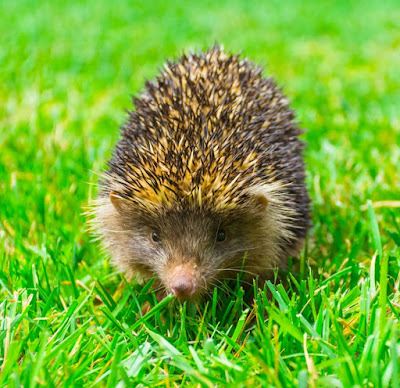If you cannot find the answer you are looking for, please contact us.
Gaoligong forest hedgehog

Described as a new species in 2018 by He et al. It is restricted to the Gaoligong Mountains of Yunnan, China. Its narrow skull and absence of certain molars make it morphologically unique among hedgehogs.
Taxonomy
| Kingdom: | Animalia |
| Phylum: | Chordata |
| Class: | Mammalia |
| Order: | Eulipotyphla |
| Family: | Erinaceidae |
| Genus: | Mesechinus |
| Species: | Mesechinus wangi |
Natural range & habitat
The Gaoligong Forest Hedgehog is endemic to a very restricted range in the Gaoligong Mountains of Yunnan Province, China, near the border with Myanmar. It has only recently been described (in 2018), and known populations are confined to submontane evergreen broadleaf forests at elevations between approximately 2,200 and 2,680 meters. This type of high-altitude forest is characterized by cool temperatures, high humidity, and rich biodiversity. The species appears to be closely associated with dense undergrowth and forest litter, where it can forage and nest, but its broader ecological preferences remain unknown. The limited range and specific habitat requirements make this species potentially vulnerable to habitat disruption.
Physical traits
The Gaoligong Forest Hedgehog is a small-bodied species with physical characteristics that distinguish it from other members of the Mesechinus genus. It possesses a narrow skull with reduced or absent M4 molars, a trait that was key to its identification as a new species. The dorsal spines are interspersed with brownish fur, and the underbelly is covered with coarse, darker hair. The face is pointed, with relatively small eyes and ears that are mostly concealed beneath the spines. Details on body size, weight, and sexual dimorphism are still lacking due to the limited number of specimens studied. Until more individuals are observed or collected, much of the variation in this species’ appearance remains undocumented.
Behavior & lifestyle
Very little is currently known about the daily or seasonal behavior of the Gaoligong Forest Hedgehog. Based on its genus and ecological context, it is likely nocturnal and solitary, foraging at night and resting in natural shelters during the day. Its activity patterns may be influenced by the mountain climate, which includes cold nights and significant seasonal variation. There is no evidence to confirm whether this species hibernates or enters torpor, although the high-elevation environment might make such adaptations beneficial. Burrowing behavior, nesting preferences, and movement range have not been documented, and field studies are necessary to fill these knowledge gaps.
Communication
As with other hedgehog species, communication in the Gaoligong Forest Hedgehog is presumed to be primarily olfactory, relying on scent cues for territorial marking and reproductive signaling. Due to the species’ elusive nature and recent discovery, no vocalizations or social behaviors have been recorded in the wild. It is unknown whether self-anointing behavior occurs, or how individuals react to threats or encounters with conspecifics. Any assumptions about communication should be treated with caution until direct observation or study can confirm them.
Diet in the wild
The natural diet of the Gaoligong Forest Hedgehog has not been studied. However, like other members of the Erinaceidae family, it is likely insectivorous and opportunistic, feeding on a wide range of invertebrates such as beetles, earthworms, and caterpillars. The moist forest floor in its native habitat is rich in decomposing plant material and insect life, which likely forms the basis of its diet. Occasional consumption of small vertebrates or plant matter is possible, but without stomach content analysis or field observation, such claims remain speculative. Detailed research is urgently needed to understand its ecological role and dietary needs.
Reproduction & life cycle
Reproductive biology for the Gaoligong Forest Hedgehog is completely unknown. There is no data on mating season, gestation period, litter size, or juvenile development. Based on related species, it may breed once or twice per year, with litters of 3 to 6 young, but these are only educated guesses. Whether the species exhibits seasonal breeding aligned with the monsoon or dry season, and whether males and females interact outside of mating, remains to be determined. No observations of maternal care, nesting behavior, or sexual maturity have been reported. Future fieldwork will be essential to document the life cycle of this poorly understood animal.
Threats & conservation status
Due to its extremely restricted range and habitat specificity, the Gaoligong Forest Hedgehog may be inherently vulnerable to environmental change. As of now, it has not been evaluated by the IUCN Red List, though its limited distribution and low population density suggest it could qualify for a threatened category. Potential threats include deforestation, habitat fragmentation, climate change, and human encroachment in highland forest areas. Fortunately, the species occurs within the Gaoligongshan National Nature Reserve, which offers some legal protection. However, the lack of baseline population data and ecological studies hinders accurate risk assessment. Conservation efforts would benefit from targeted surveys, community engagement, and habitat monitoring in the region.
This species in captivity
The Gaoligong Forest Hedgehog is not held in captivity in zoos or breeding centers, and no individuals are known to exist outside of their native habitat. There is no history of the species in the exotic pet trade or in wildlife rehabilitation centers. Because of its recent discovery and the lack of knowledge about its diet, behavior, or health requirements, it is not suitable for captive care at this time. Should conservation breeding be considered in the future, detailed ecological studies and husbandry trials would be essential. Until then, conservation should focus entirely on habitat protection and in-situ monitoring.
